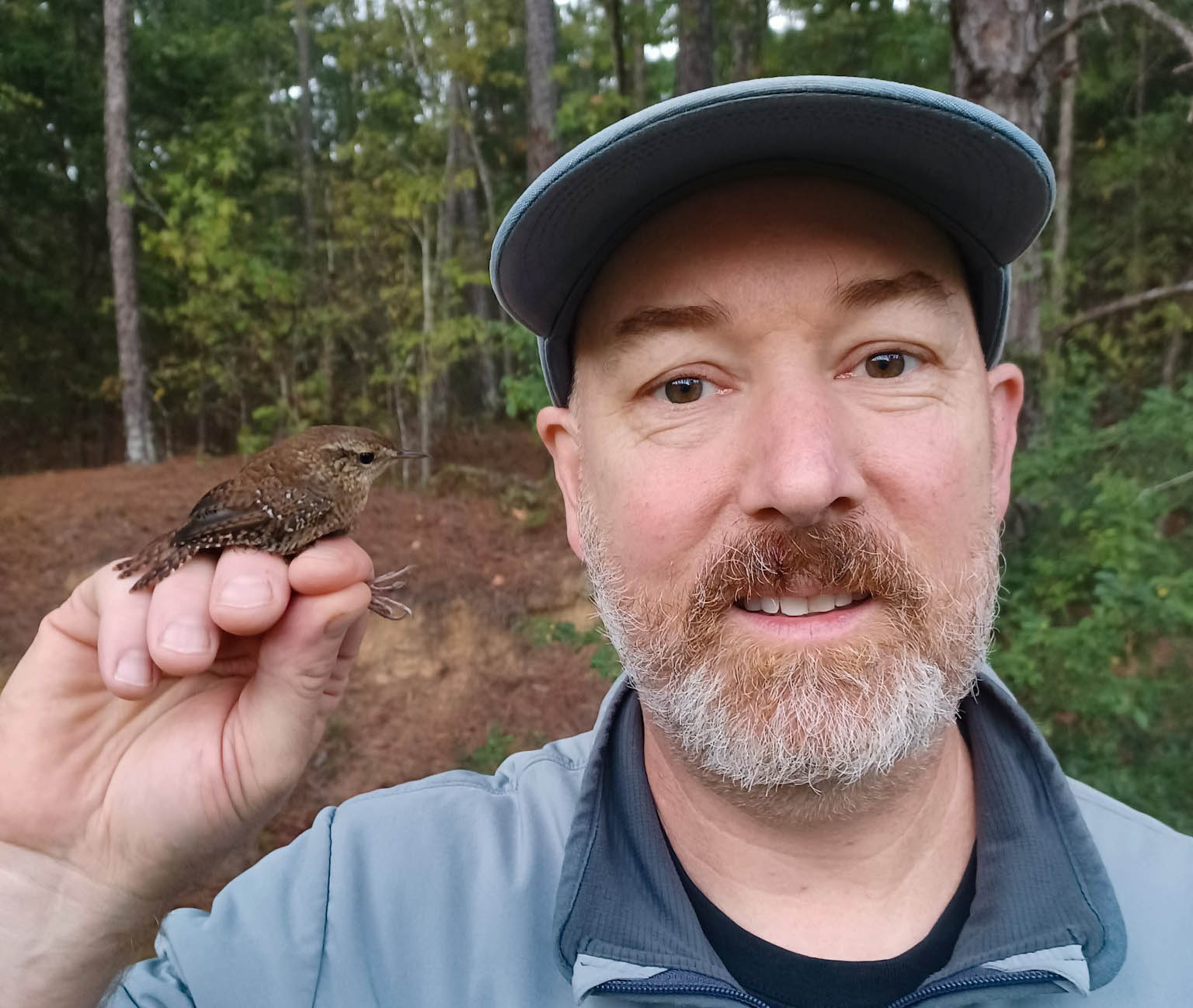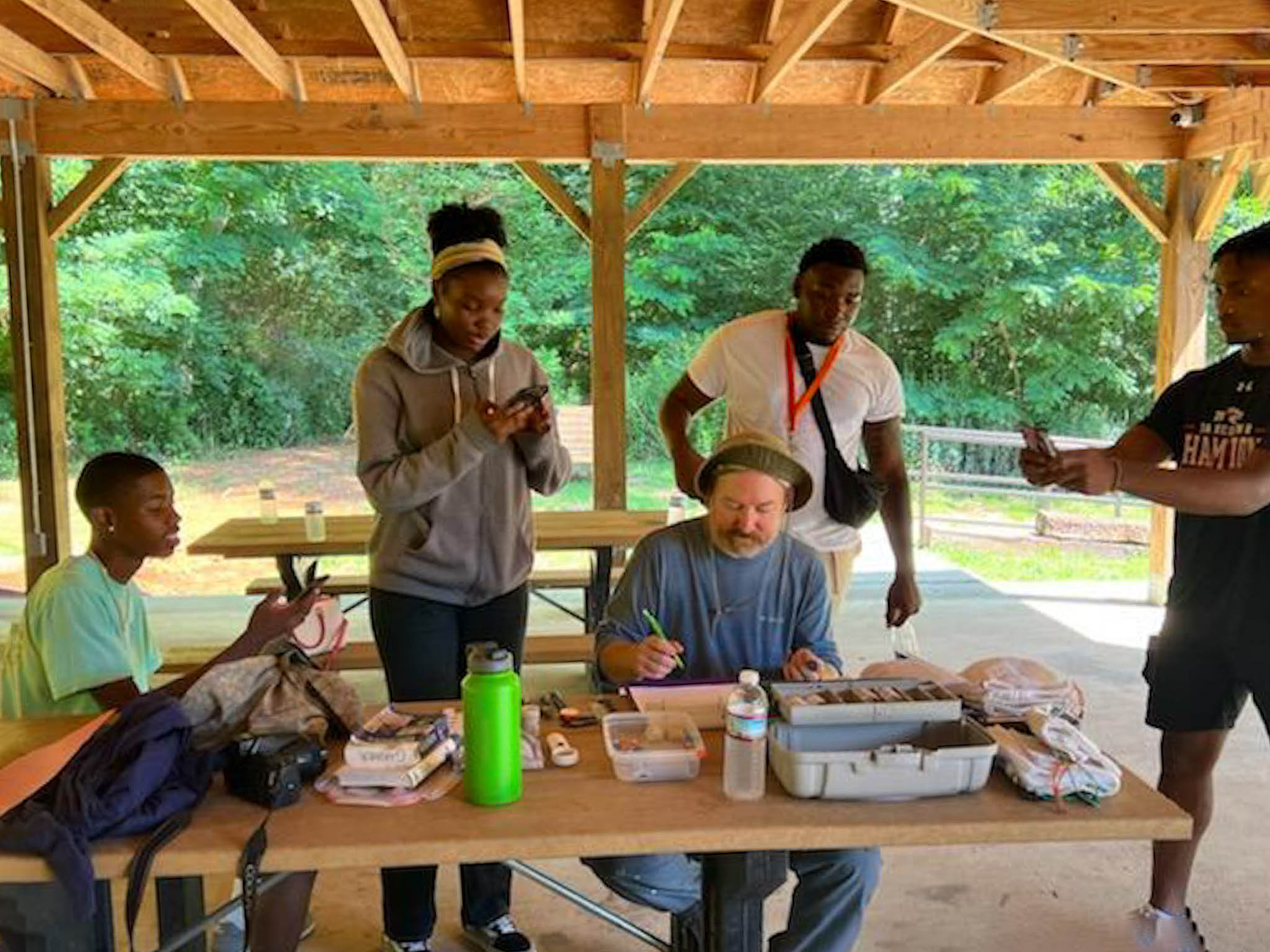Thompson Shares Passion for Birding and Tips for Exploring Alabama’s Skies

AAMU Ph.D. Student Tracks the Elusive Cerulean Warbler
Alabama A&M University Ph.D. student Thomas Thompson has spent years in the field listening to the rhythms of the natural world. From the quiet trails of Chapman Mountain to the forest canopy of Bankhead National Forest, Thompson has become a familiar figure in Alabama’s birding community, particularly for his work with one of the state’s most elusive and beautiful migratory birds – the Cerulean Warbler.
Thompson, a Ph.D. candidate in Plant and Soil Science in the Department of Natural Resources and Environmental Sciences, was featured this spring in AL.com’s “Beautiful Birds of Alabama” series. In the feature, he shared his expertise on the Cerulean Warbler, a small, sky-blue songbird whose numbers have dropped significantly in recent decades. Despite their size and fragility, these birds undertake a remarkable migration each year – traveling thousands of miles from South America to the Appalachian forests of the United States.

“They begin their northern migration in mid-March and are mostly out of Alabama by mid-May,” Thompson explained. However, there are a few isolated pockets left of breeding Cerulean Warblers in Alabama with William B. Bankhead National Forest being one of their southernmost breeding sites. “They breed primarily in the Appalachian states and migrate South again as early as July, showing up here again around September before heading to the Andes Mountains in Peru and Venezuela.”
Originally from Austin, Texas, Thompson’s path to AAMU included a B.S. in Wildlife Biology from Texas State University and an associate’s degree in Environmental Science from Austin Community College. He just earned his M.S. in Plant and Soil Science from Alabama A&M this month.
“I’ve always been drawn to nature, even as a child,” he said. “But it was during fieldwork that I started paying attention to things like bird and frog calls. It became a way to understand the world around me.”
That attentiveness evolved into a passion – and eventually, a research focus. Thompson is currently studying the breeding success and habitat requirements of Cerulean Warblers in Alabama’s William B. Bankhead National Forest.
“It’s a species in steep decline,” he said. “Understanding what they need to thrive can help inform conservation efforts not just in Alabama, but across their range.”
For Thompson, birdwatching is more listening than looking.
“Birding by ear is a skill,” he said. “It takes time to develop, but once you start recognizing songs, it opens up an entirely new way to connect with wildlife. You might not see a bird, but you’ll know it's there.”
He encourages aspiring birders to begin simply.
“All you need is a decent pair of binoculars and a good field guide,” he said. “Apps like Merlin Bird ID are also great – they use your phone’s microphone to help identify bird songs.”
Among his favorite online resources is eBird, a citizen science platform where users log bird sightings. He also recommends Buteo Books, a bookstore specializing in ornithology.
“Start in your own backyard,” Thompson advised. “Or visit Chapman Mountain Preserve or Green Mountain Preserve – both are fantastic birding spots managed by the North Alabama Land Trust.”

At AAMU, Thompson is an active member of the University’s student chapter of The Wildlife Society, as well as Alabama Audubon and the American Ornithological Society. He frequently birds with other graduate students, including Kern Freesland, Kira Williams, Andrew Cantrell, and undergraduate Ashley Woods.
Thompson has studied rats, bats, toads, fish, owls and birds and says warblers are his favorite because they’re so interesting. “They’re small insectivores with incredible vocal variety,” he said. “Their behavior is secretive, even cryptic, so detecting them often comes down to hearing their songs. Each identification feels like solving a puzzle. It’s incredibly rewarding.”
Thompson plans to continue his fieldwork through the summer, further honing his research and field skills while exploring future opportunities – whether that’s advancing deeper into ornithological study or entering the wildlife conservation workforce.
“There’s still so much to learn,” he said. “But I’m glad I get to do this work – and glad I found a place like Alabama A&M that supports it.”